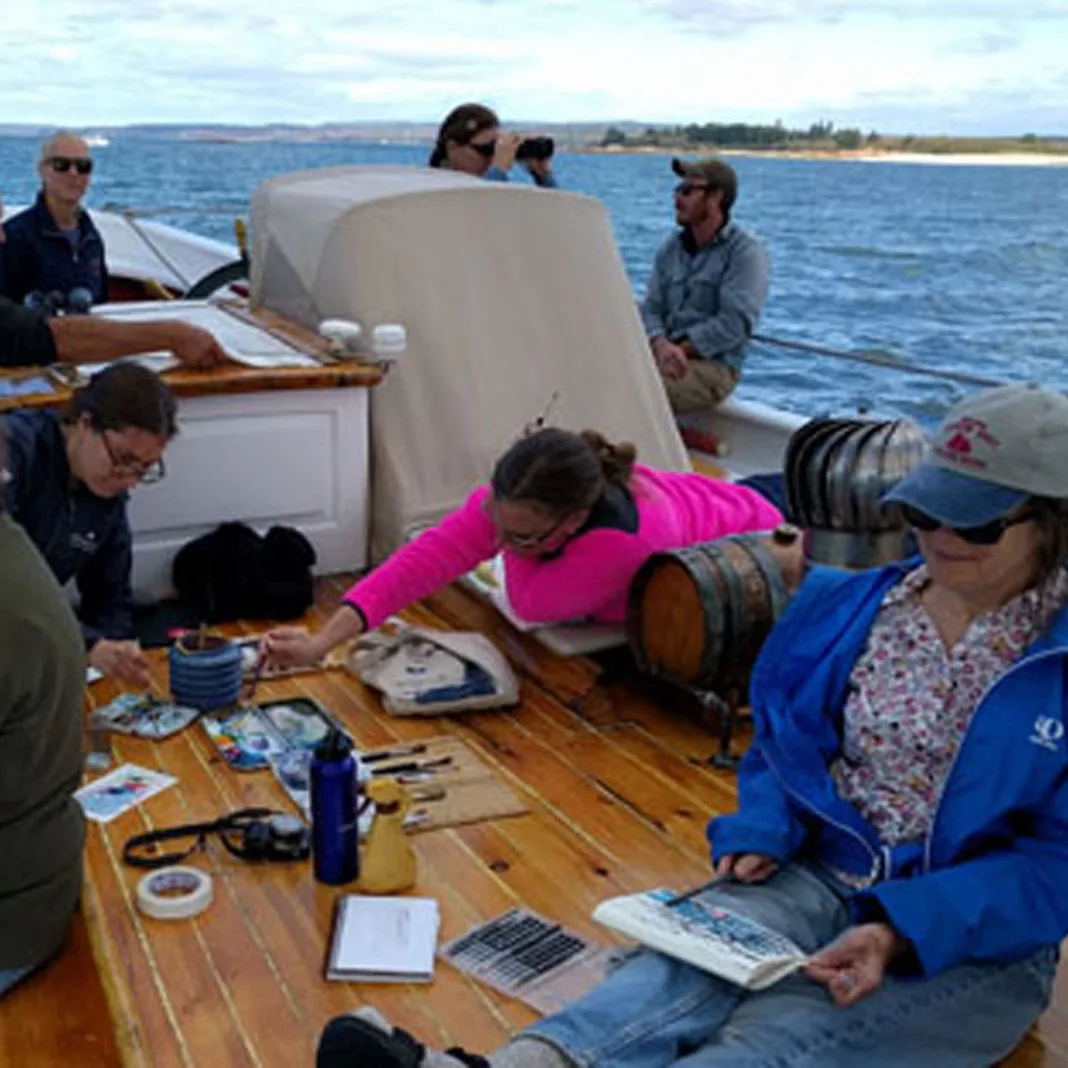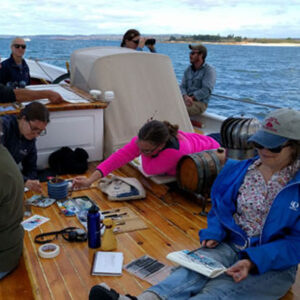
The track up Beech Hill is my daily morning routine. Occasionally I run across C-, who’s a co-owner of an elegant windjammer plying Penobscot Bay.
As you know, I teach two watercolor workshops each year aboard the schooner American Eagle. These workshops combine two things I love: sailing and painting. I get to do them without the responsibility of owning a boat, and my students get to do them without the responsibility of carrying their gear. (I supply it.)
I’m always thinking about ways to get more people excited about the combination of painting and sailing, because I can’t imagine anything better. Windjammers tend to attract older people, and that’s great, except that I don’t really understand why younger people don’t love them too.
“I had an idea that windjamming is the natural extension of eco-tourism,” I told C- the other day. “But I can’t figure out a way that you could stack 18 kayaks on your deck. They wouldn’t fit.”
“We don’t have to,” she pointed out. “The boats themselves are the original form of ecotourism.”
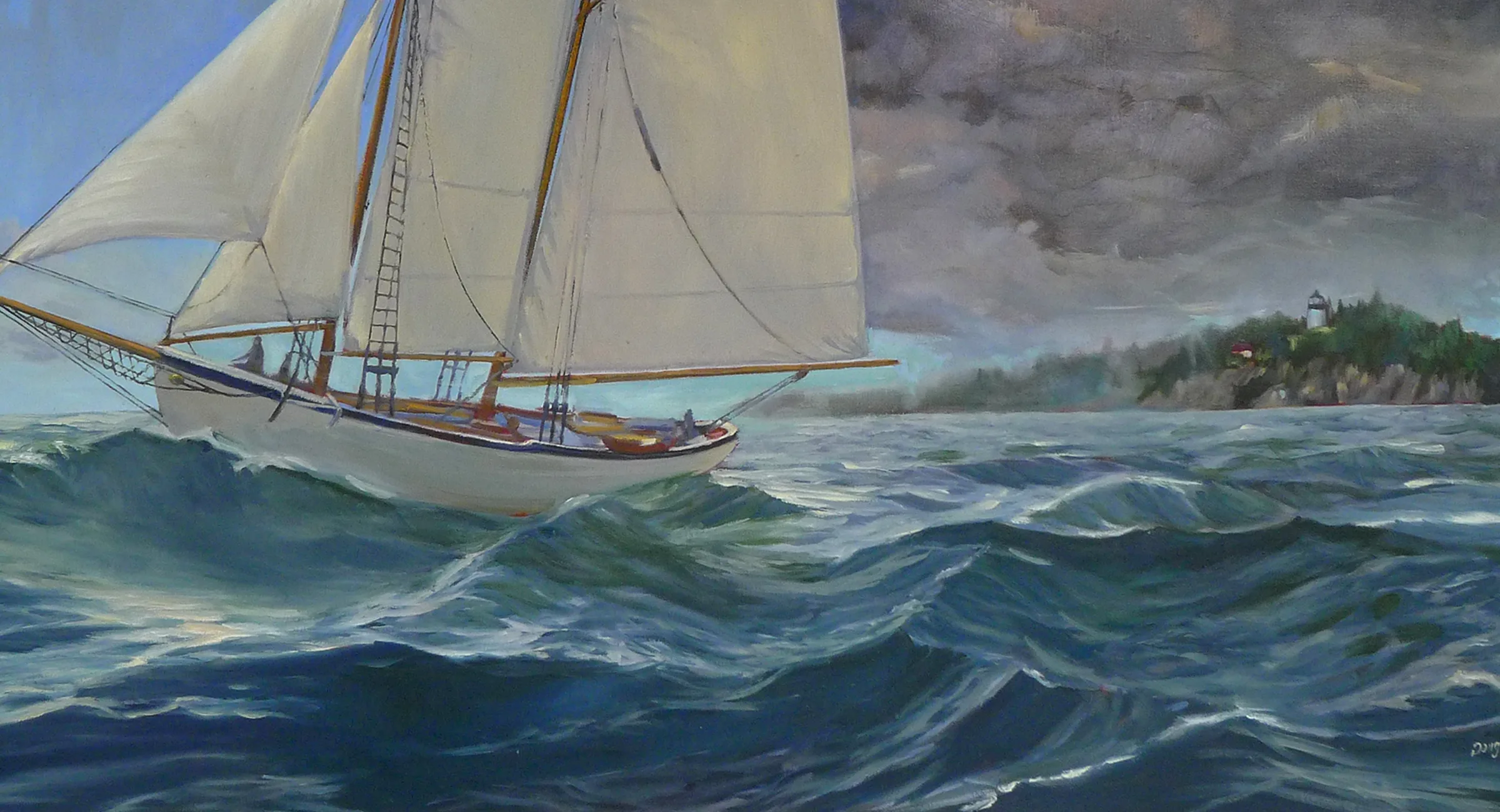
What is ecotourism?
Ecotourism is defined as “responsible travel to natural areas that conserves the environment, sustains the well-being of the local people, and involves interpretation and education.”*
Schooners rely on wind power to glide silently through the sea; hence their moniker of ‘windjammers.’ We pass ledge and small islands where sea birds and eagles nest. I’ve seen sea otters, dolphins, and, memorably, a whale breaching off Rockland harbor last fall.
Because American Eagle carries several smaller vessels, including a seine boat, we can row to uninhabited islands, which we visit on a carry-in, carry-out basis. And those interested in studying quaint, endangered local cultures need look no farther than the lobstermen of coastal Maine.
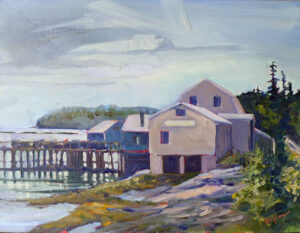
So why hasn’t the windjammer industry tapped into the $200 billion annual ecotourism market? I suspect it is because we believe that to see something exotic, you must go overseas. Having traveled extensively, I know this is nonsense. New Englanders and Nevadans may-nominally-share the same language, but we live in very different physical, economic and cultural communities. Ours is a vast country, twice as large as the EU. It has amazing diversity, including more than 95,000 miles of coastline.
Maine’s little piece of that includes 17 million acres of forestland and 3,500 miles of rocky coast. There are more than 3000 sea islands (and who knows how many on inland lakes). Only about 200 have more than four structures, meaning that the whole coastline is covered with forestland, bluffs, cliffs, and coves-and all the wildlife that goes with that.
As a painter, I find that irresistible, and I’m not alone. That’s why the Maine coast is infested with artists and galleries.
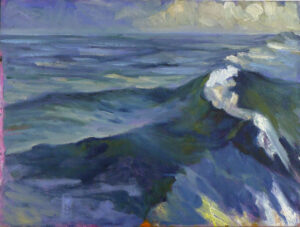
Where happiness lies
“A wandering mind is an unhappy mind,” wrote Matthew Killingsworth and Daniel Gilbert. We’re happiest when we’re living in the moment, totally focused on what we’re doing. A wandering person, on the other hand, tends to be a sublimely happy soul. New experiences sharpen our focus in a way that material goods can’t. Soon after they’re purchased, our new car, phone or dress fade into the background; in fact, they’re only notable if there is a story to their acquisition.
Psychologists tells us that experiences bring people more enduring happiness than do possessions. Which, I suppose, is why I love the paintings I’ve done from the deck of American Eagle so much. They are treasured memories of happy days.
Reserve your spot now for a workshop in 2025:
- Advanced Plein Air Painting, Rockport, ME, July 7-11, 2025.
- Sea and Sky at Acadia National Park, August 3-8, 2025.
- Find Your Authentic Voice in Plein Air, Berkshires, MA, August 11-15, 2025.
- Immersive In-Person Fall Workshop, Rockport, ME, October 6-10, 2025.

